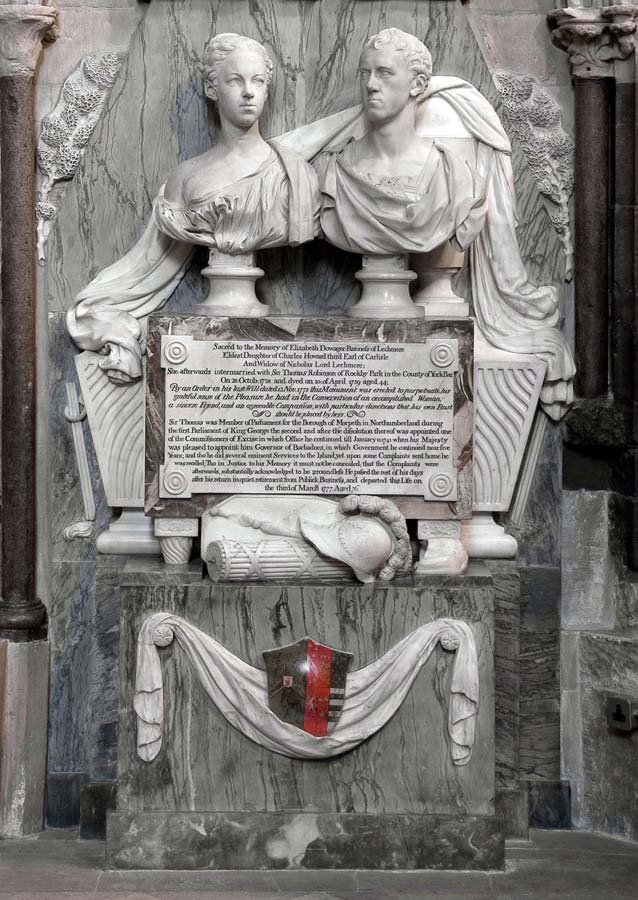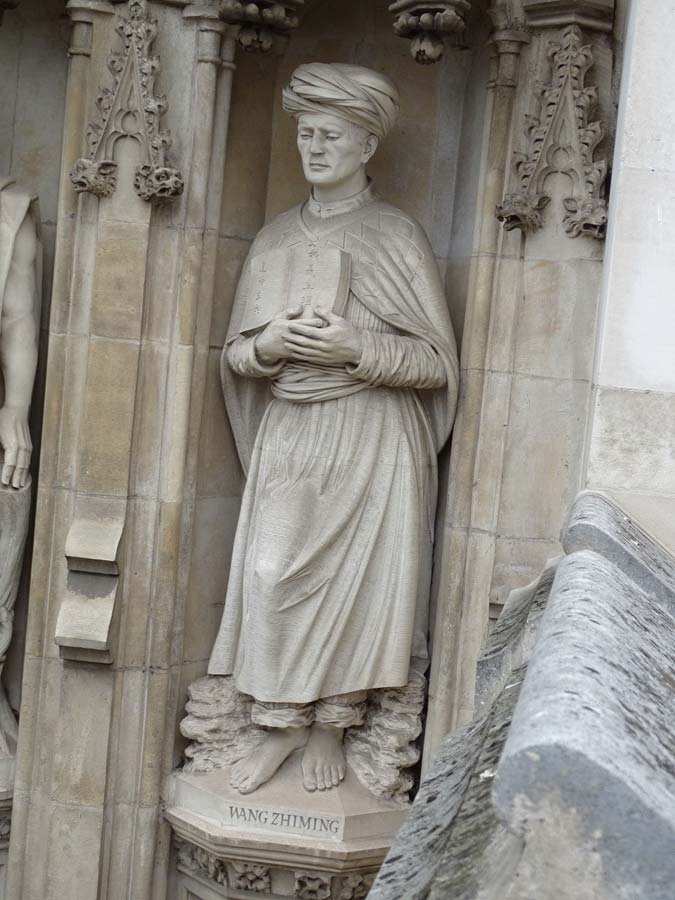Nicholas Hawksmoor
Nicholas Hawksmoor, architect, was Surveyor of the Fabric at Westminster Abbey from 1723 but he is not buried in the Abbey nor does he have any memorial tablet. However his great contribution to the building is seen every day by millions of people.
He designed the upper sections of the west towers, which were completed after his death by his successor John James in 1745. The towers had been left unfinished in the medieval period, the north west one being higher than the south west. Hawksmoor continued the work of restoration begun under his predecessor as Surveyor, Sir Christopher Wren. The Portland stone towers rise to a height of 225 feet 4 inches. As well as various designs for completing the west towers he also put forward designs for a central dome or tower over the lantern and a classical design for the choir screen in the nave but these were not executed.
He was born in early 1662 at East Drayton in Nottinghamshire, son of Nicholas, a farmer. His mother's name is not known but she later married William Theaker. He moved down to London and was personal clerk to Wren from about 1678. Later he was deputy surveyor under Sir Christopher and worked on the Royal Naval Hospital at Greenwich, City of London churches and on St Paul's cathedral with him. He became a leader in the style known as English Baroque, designing Easton Neston house in Northamptonshire and working with Sir John Vanbrugh on Castle Howard and Blenheim Palace. At Oxford he completed All Souls College and designed churches in the east end of London. He married Hester in 1696 and their daughter Elizabeth married Nicholas Philpot and secondly Nathaniel Blackerby. He died on 25th March 1736 at his house in Westminster but directed in his will that he should be buried in the churchyard at Shenley in Hertfordshire.
Restoration of the towers
The most recent cleaning and restoration of the west front was completed in 1993 and H.R.H. Philip, Duke of Edinburgh unveiled an inscription at the base of the north west tower. The words have their origin in a grace (prayer) said after meals dating from the reign of Elizabeth I:
May God grant to the living, grace
To the departed, rest
To the Church & the World, peace and concord
And to us sinners, eternal life.
During this work the shields and Royal Arms above the west door, carved by John Boson, were painted and ten statues to modern martyrs were unveiled in the (previously empty) niches. A new gable cross was added, as a memorial to T.G. Thompson (director of the Westminster Abbey Trust) and four new statues of Virtues (from north to south) Truth, Justice, Mercy and Peace were erected flanking the entrance.
Fourteen small grotesque heads, representing those concerned in the restoration or Abbey staff members, were carved on the north west tower.
Six new statues for the niches flanking the west window were also added (north, from top) St Mary, St Peter and St Edward (south) St John, St Paul and St Faith.
The one handed clock in the north west tower dates from 1738, by John Seddon. The Latin inscription below the gable - translated "Year of the reign of King George II the 8th A.D. 1735" referring to the start of Hawksmoor's new building work - was re-gilded.
Further reading
Some of his designs for the Abbey are on display in the new Queen's Diamond Jubilee Galleries in the Abbey triforium
"900 Years. The Restorations of Westminster Abbey" by Thomas Cocke, 1995
"The lantern tower of Westminster Abbey 1060-2010" by Warwick Rodwell, 2010
"Hawksmoor" by Kerry Downes, 1979
Twenty of his drawings were presented to the Abbey Archives in 1993

This image can be purchased from Westminster Abbey Library
Image © 2024 Dean and Chapter of Westminster










